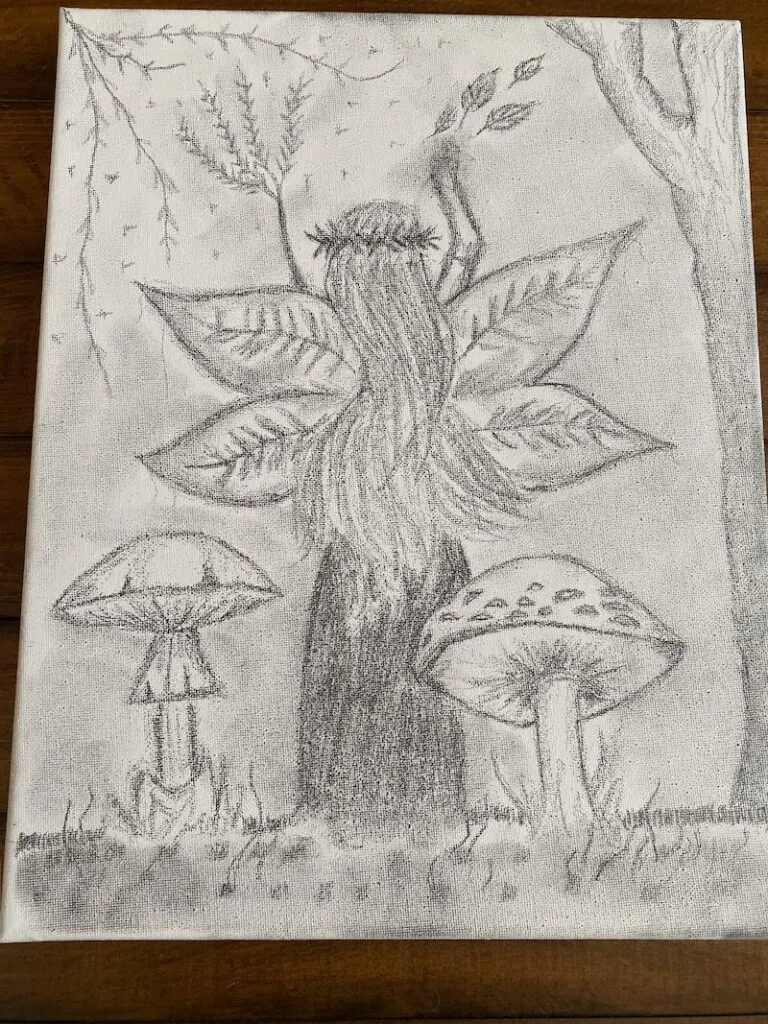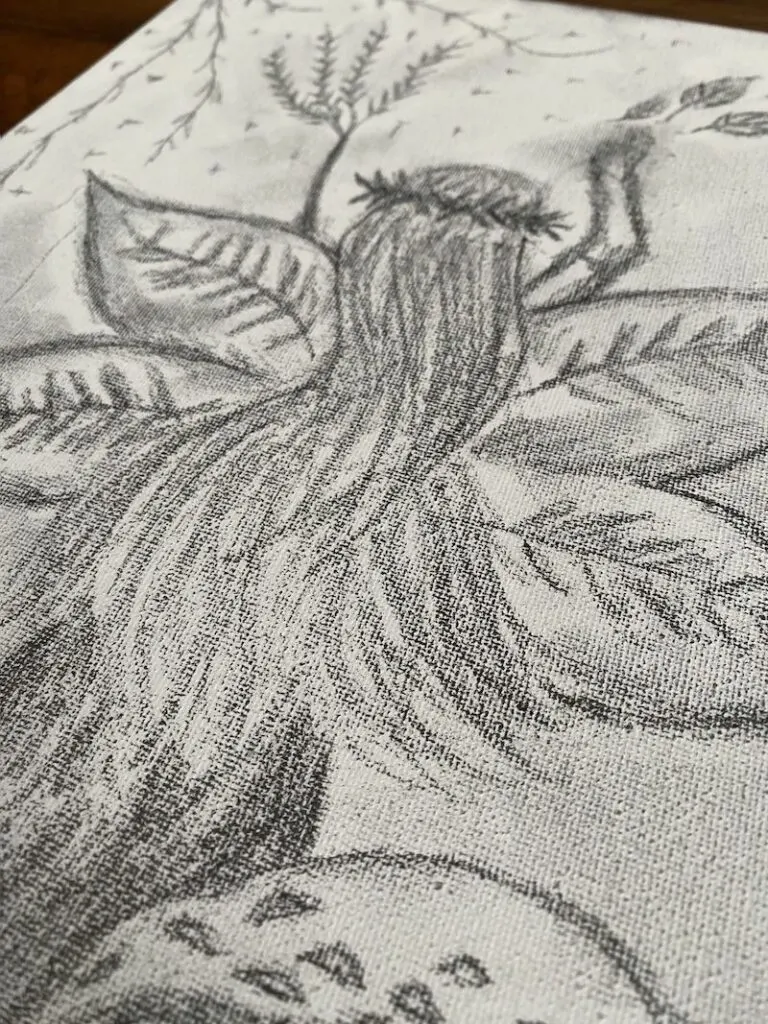It can seem daunting to pick a pencil to use for sketching on canvas. Do you pick a hard pencil or a soft one? A mechanical one or a standard sketching pencil? There are a lot of pencil options that offer different perks and drawbacks.
H pencils are a great choice for sketching on canvas if you prefer a harder lead that is less prone to smudging. B pencils or charcoal can be used on canvas if you plan to create your artwork out of this medium and want to take advantage of the tendency of the pencils to smudge in order to do so.
Choosing a sketching pencil for canvas depends on the overall goal for your art.
Sketching on a Canvas Before Painting
If you’re preparing to paint on a canvas, it’s important to consider whether your sketch will show through your final product. That’s why artists may choose to avoid sketching with traditional graphite drawing pencils altogether in favor of other methods.
If you’re worried about your sketching lines showing through your final painting, you’ll want to be considerate of how you do your preliminary sketching on your canvas.
Being heavy handed with a soft pencil that lays down a lot of dark graphite is going to be hard to erase from your canvas. If you decide to leave the lines, it’s possible they could show through your paint when you’re done.
This is why some artists prefer to use transfer paper, water-soluble pencils, charcoal, and other methods of mapping out their paintings on their drawings.
Another option is to limit your sketching to the ultimate essentials. Be extremely light with your strokes and don’t over do it. Use a hard pencil like an H, realizing that you may still have issues with lines showing through, despite your efforts.
Given that there are a number of methods for sketching prior to painting, plus different strategies you can use, I suggest experimenting. Grab a canvas that is purely for experiments. Test out your sketching techniques and lay some paint down.
How did it go? What did you learn? Sometimes, having an experimental project you can mess up with, test out, and otherwise learn from is the best way to determine the strategy you want to use going forward.
Sketching on a canvas prior to painting is the reason that many of us find ourselves puzzled with our art supplies in hand.
That said, there are times when I’ve enjoyed sketching on canvas for the sake of sketching on canvas! Let’s talk about that next.
Sketching on Canvas as a Final Product
When you’re sketching on canvas with the goal of having your sketching work be your final product, it’s important to understand how your pencil will interact with your canvas surface. That way, you can take advantage of the natural tendencies of the pencil to smudge as you work.
Sketching on canvas for the sake of sketching on canvas can actually be really fun.
To be clear, this will likely be a mess. It usually is for me!

In this scenario, I forego the advice on making my lines as light and indistinguishable as possible. Instead, I lay down some dark, B pencil strokes. This dark, thick lead is prone to smudging.
So, what do I do? I intentionally start smudging and use it as a way to shade my work and give it character.
The work below used a combination of pencils ranging from 2B to 6B. It also uses a mechanical pencil for the precise lines.

The canvas is lightly primed, but still has some tooth to it. The type of canvas you use can make a difference. While pencil lead will generally smudge on canvas, pencil on a smooth canvas may be even more prone to smudging than pencil on a rough canvas.
Art like this is a fun mess to make. That said, it’s important to consider that it’s also a mess when it’s finished. Just because you’ve finished your work doesn’t mean that it will suddenly stop smudging and smearing.

When you’re done with a piece of work like this, consider using a fixative to prevent as much additional smudging as possible.
Sketching with colored pencil on canvas is a bit cleaner, but is naturally a very different process.
Important note: using a fixative can change the way your final product looks. It can be helpful to do an experimental piece so that you can get a feel for how your fixative will impact your work based on the type of canvas and pencil you’re using.
Whether you’re sketching on canvas for the purpose of painting on it later, or you’re sketching for the sake of sketching, there are a number of things to consider before getting started. When in doubt, experiment with different methods to find the one that works for you.

Diana has been an artist for over 27 years and has training in drawing, painting, digital drawing and graphic design. Diana’s latest obsession is digitally drawing with Procreate and Procreate Dreams. Diana has experience selling her art across a number of platforms and loves helping other artists learn how to make money from their art as well.
